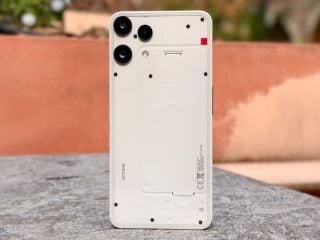- Home
- Science
- Science News
- Space Instrument Measures Unexpected Activity on Moon
Space Instrument Measures Unexpected Activity on Moon

"This knowledge is of great importance to the lunar space environment which is affected both on the lunar dayside and nightside surfaces," said Charles Lue, a researcher at the Swedish Institute of Space Physics and Umea University, who analysed SARA observations as part of his PhD thesis.
The reflected solar wind ions move in spiralling tracks that can take them from the lunar dayside, where the solar wind strikes first, to the nightside of the Moon.
In local areas with strong magnetism, the solar wind flow is restricted on the surface at the same time as adjacent areas receive an increased flow.
In the long term, this has effects on the surface of the Moon and can, for instance, have an effect on the water levels in the lunar crust.
"The effects can even be seen in the form of visible light - like bright swirls imprinted on the surface of the moon," Charles Lue was quoted as saying in a Swedish Institute of Space Physics press release.
The particle instrument SARA (Sub-keV Atoms Reflecting Analyser) that was developed at the Swedish Institute of Space Physics travelled to the Moon on board the Indian satellite Chandrayaan-1.
SARA studied the solar wind interaction with the Moon in 2009, and the observations made by the instrument have since been analysed by researchers, including Charles Lue.
Get your daily dose of tech news, reviews, and insights, in under 80 characters on Gadgets 360 Turbo. Connect with fellow tech lovers on our Forum. Follow us on X, Facebook, WhatsApp, Threads and Google News for instant updates. Catch all the action on our YouTube channel.
Related Stories
- Samsung Galaxy Unpacked 2025
- ChatGPT
- Redmi Note 14 Pro+
- iPhone 16
- Apple Vision Pro
- Oneplus 12
- OnePlus Nord CE 3 Lite 5G
- iPhone 13
- Xiaomi 14 Pro
- Oppo Find N3
- Tecno Spark Go (2023)
- Realme V30
- Best Phones Under 25000
- Samsung Galaxy S24 Series
- Cryptocurrency
- iQoo 12
- Samsung Galaxy S24 Ultra
- Giottus
- Samsung Galaxy Z Flip 5
- Apple 'Scary Fast'
- Housefull 5
- GoPro Hero 12 Black Review
- Invincible Season 2
- JioGlass
- HD Ready TV
- Laptop Under 50000
- Smartwatch Under 10000
- Latest Mobile Phones
- Compare Phones
- Realme P4x 5G
- OnePlus Ace 6T
- OPPO A6x 5G
- Samsung Galaxy Z TriFold
- Poco F8 Ultra
- Poco F8 Pro
- Huawei Mate 80 RS Master Edition
- Huawei Mate 80 Pro Max
- Asus ProArt P16
- MacBook Pro 14-inch (M5, 2025)
- Poco Pad M1
- Poco Pad X1
- Just Corseca Skywatch Pro
- Honor Watch X5
- Acerpure Nitro Z Series 100-inch QLED TV
- Samsung 43 Inch LED Ultra HD (4K) Smart TV (UA43UE81AFULXL)
- Asus ROG Ally
- Nintendo Switch Lite
- Haier 1.6 Ton 5 Star Inverter Split AC (HSU19G-MZAID5BN-INV)
- Haier 1.6 Ton 5 Star Inverter Split AC (HSU19G-MZAIM5BN-INV)

















